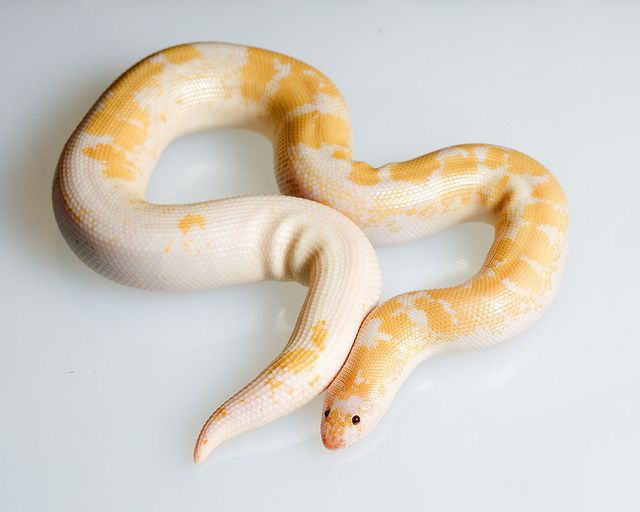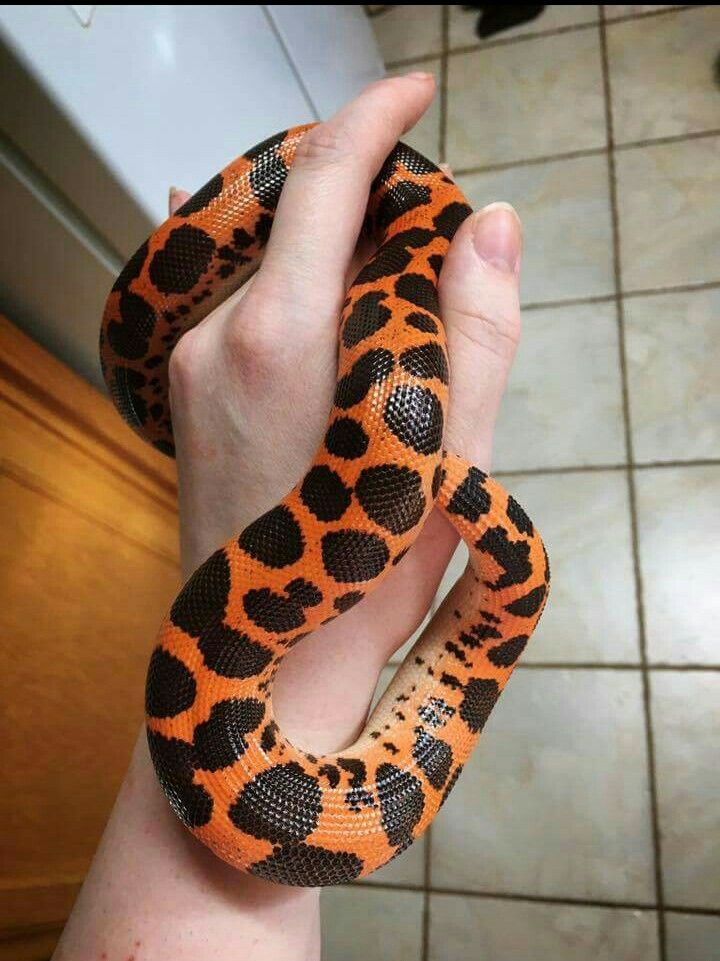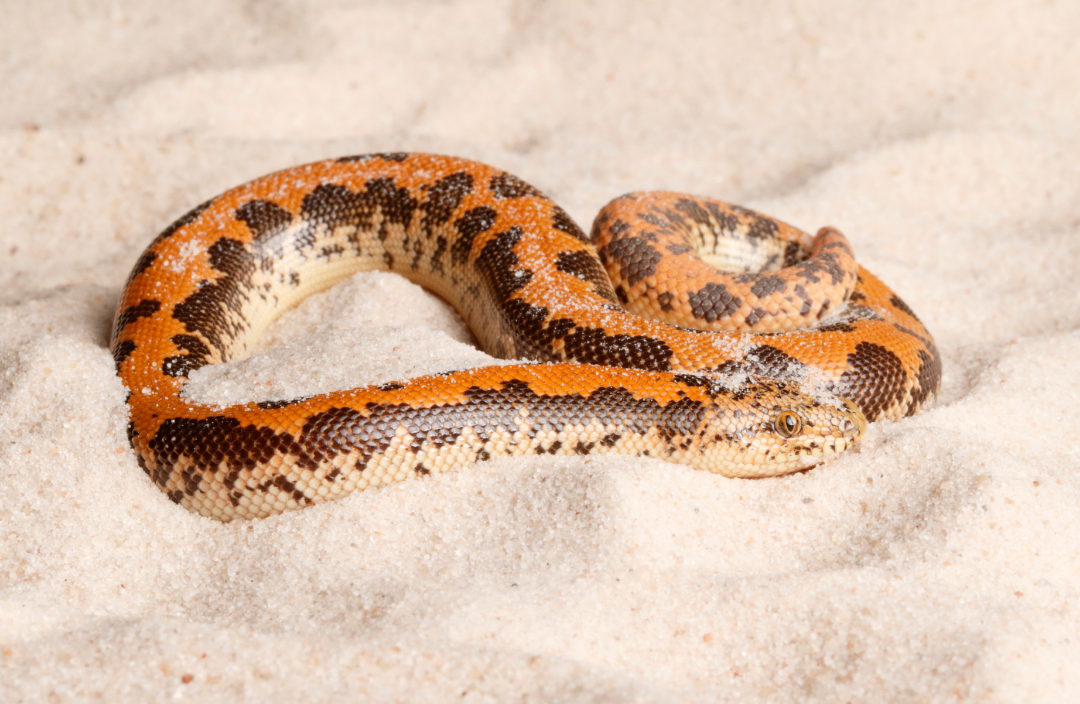I. Introduction
(A) Unveiling the Sand Snake: A Dweller of Sandy Depths
The sand snake, a captivating resident of sandy deserts worldwide, is a fascinating reptile shrouded in mystery. These burrowing beauties are perfectly adapted to their arid environment, spending most of their lives hidden beneath the dunes. Despite their secretive nature, sand snakes play a vital role in desert ecosystems. Let’s delve into the world of these remarkable creatures, exploring their physical characteristics, behavior, and the challenges they face in the harsh desert landscape.
(B) Captivating Creatures: Exploring the Diversity of Sand Snakes
Sand snakes belong to the family Colubridae, which includes a wide variety of non-venomous colubrid snakes. There are over 40 recognized species of sand snakes, found in deserts across North Africa, the Middle East, Central Asia, and even parts of North America. Despite their shared name, sand snakes exhibit a surprising level of diversity in size, color patterns, and even burrowing techniques. Some species, like the Saharan sand boa, are heavy-bodied with a blunt tail, while others, like the hook-nosed snake, are slender with a pointed snout ideal for digging.

II. Delving into the Sand Snake’s Physical Characteristics
(A) A Master of Camouflage: Physical Adaptations for a Sandy Life
Sand snakes are masters of camouflage, boasting physical features that allow them to blend seamlessly with their desert surroundings. Their scales are typically smooth and often sandy brown, beige, or yellow in color, perfectly matching the desert dunes. Some species even have intricate patterns that further enhance their camouflage. Their small eyes, positioned high on their heads, provide a good field of view for navigating the sandy terrain. Unlike most snakes, sand snakes lack a pelvic girdle and hind limbs. This adaptation allows them to move effortlessly through loose sand, propelling themselves with their powerful bodies.
(B) Specialized Senses: Navigating the Desert with Precision
While sight plays a role in their environment, sand snakes rely heavily on other senses to navigate the desert. Their forked tongues are used for tasting the air, helping them detect prey and identify potential mates. Many sand snakes also have specialized scales on their snouts that are believed to be sensitive to vibrations in the sand. This allows them to locate buried prey with remarkable accuracy. Some species, like the fringe-footed sand snake, have even developed fringes on their scales that may aid in burrowing and swimming through loose sand.

III. Unveiling the Sand Snake’s Behavior and Hunting Strategies
(A) Nocturnal Hunters: Stalking Prey Under the Cloak of Darkness
Sand snakes are primarily nocturnal creatures, emerging from their burrows under the cover of darkness. This strategy helps them avoid the scorching desert heat during the day and allows them to capitalize on the cooler nighttime temperatures. When active, sand snakes spend most of their time hunting for prey. They are solitary animals, and interactions between individuals are infrequent.
(B) Specialized Hunting Techniques: Burrowing and Ambushing
Sand snakes utilize a variety of hunting strategies depending on the species and prey availability. Many sand snakes are skilled burrowers, using their powerful bodies and lack of limbs to propel themselves through the sand. They can quickly disappear beneath the surface to escape predators or ambush unsuspecting prey. Some species, like the hook-nosed snake, use their specialized snouts to dig out prey hiding beneath the sand. Others, like the Saharan sand boa, may lie in wait near burrow entrances, ambushing prey as it emerges.

IV. Exploring the Sand Snake’s Diet and Prey Preferences
(A) Opportunistic Carnivores: A Diverse Menu of Desert Dwellers
Sand snakes are obligate carnivores, meaning their diet consists solely of meat. They are opportunistic hunters, preying on a variety of small animals readily available in the desert. Their primary prey includes invertebrates like insects, scorpions, and centipedes. They also readily consume lizards, small rodents, and even other snake species. The size of their prey varies depending on the species of sand snake, with some larger species capable of consuming prey several times their own width.
(B) Unique Dietary Adaptations: Consuming Sand with Their Prey
Sand snakes have a unique adaptation related to their diet. When consuming prey like lizards or rodents, sand snakes may ingest some of the sand along with their meal. This sand is believed to aid in digestion by grinding up the prey’s bones and exoskeletons. The sand eventually passes through the snake’s digestive system and is expelled with waste.

V. Understanding the Sand Snake’s Social Structure and Breeding Behavior
(A) Solitary Existence: Living a Life of Independence
As mentioned earlier, sand snakes are solitary creatures. They only come together to mate, and females raise their young alone. Males may compete for access to females during breeding season, but interactions are typically brief and limited to displays or even minor physical confrontations. Females typically store sperm from multiple males, increasing the genetic diversity of their offspring.
(B) Reproduction and Parental Care: Nurturing the Next Generation
Breeding season for sand snakes varies depending on the species and location. Some species breed in the spring, while others may breed in the fall or even throughout the year if conditions are favorable. Sand snakes are oviparous, meaning they lay eggs. Females typically lay clutches of 2-10 eggs, depending on the species. The eggs are deposited underground in burrows or other sheltered locations. The female takes no further parental care after laying her eggs. The eggs incubate for several weeks, and the hatchlings emerge as miniature versions of their parents, fully independent from the moment they break free from their shells.
VI. Threats Facing the Sand Snake: Conservation Efforts and the Importance of Habitat Protection
(A) Declining Populations: Threats from Habitat Loss, Human Activity, and Disease
Despite their impressive adaptations, sand snake populations are facing several threats in the wild. The primary threat is habitat loss due to human activities like desertification, agricultural expansion, and urban development. These activities destroy and fragment the sand snake’s desert homes, reducing their available prey and hindering their ability to find mates and raise young. Additionally, sand snakes are sometimes captured for the illegal pet trade, although they are not generally considered ideal pets due to their specific care requirements. Emerging diseases can also pose a threat to sand snake populations, especially in fragmented habitats where populations are more isolated. These combined factors have led to declines in sand snake numbers in some regions.
(B) Conservation Initiatives: Protecting Sand Snakes and Their Desert Ecosystems
Fortunately, there are ongoing conservation efforts dedicated to protecting sand snakes and their desert habitats. These efforts include:
- Habitat Protection: Organizations work to establish protected areas and promote sustainable land use practices to conserve desert ecosystems.
- Monitoring Populations: Researchers conduct surveys and studies to track sand snake populations and identify areas where they are most vulnerable.
- Public Awareness: Raising awareness about the sand snake’s plight and the importance of desert conservation is crucial for garnering public support for protection efforts.
- Captive Breeding Programs: In some cases, zoos or specialized facilities may participate in captive breeding programs aimed at maintaining healthy sand snake populations. These programs can be used to reintroduce individuals to suitable wild habitats in the future, but careful consideration is needed to ensure successful reintroduction.

VII. Captivating the World: The Sand Snake as a Cultural Icon
(A) Artistic Depictions: Capturing the Sand Snake’s Allure in Art and Literature
While primarily desert dwellers, sand snakes have captured the human imagination for centuries. Their unique appearance and secretive nature have inspired artists and writers in various cultures. Depictions of sand snakes can be found in ancient Egyptian hieroglyphics, and they have been featured in folklore and mythology across their range. In modern times, sand snakes have gained popularity online, with their photos and videos showcasing their adaptations and behaviors.
(B) Online Sensation: The Sand Snake’s Rise to Internet Fame
The internet has played a unique role in raising awareness about the sand snake. Their captivating visuals and interesting behaviors have made them stars on social media platforms. While these online encounters can spark interest and appreciation for the species, it’s important to remember that sand snakes are wild animals with specific needs. Owning a sand snake is not recommended for the average pet owner.
VIII. Responsible Pet Ownership: Considerations Before Welcoming a Sand Snake into Your Home
Understanding the Wild Nature of Sand Snakes: Not Pets for the Average Household
The internet’s portrayal of sand snakes may make them seem like fascinating companions, but it’s crucial to understand that they are not suitable pets for most people. Sand snakes require a specialized terrarium that replicates their desert environment, including loose substrate for burrowing and proper heating and lighting. Their dietary needs are specific, and they can carry parasites or diseases that can be harmful to humans. Many species of sand snakes are also protected by law, and owning them illegally can contribute to the decline of wild populations.



